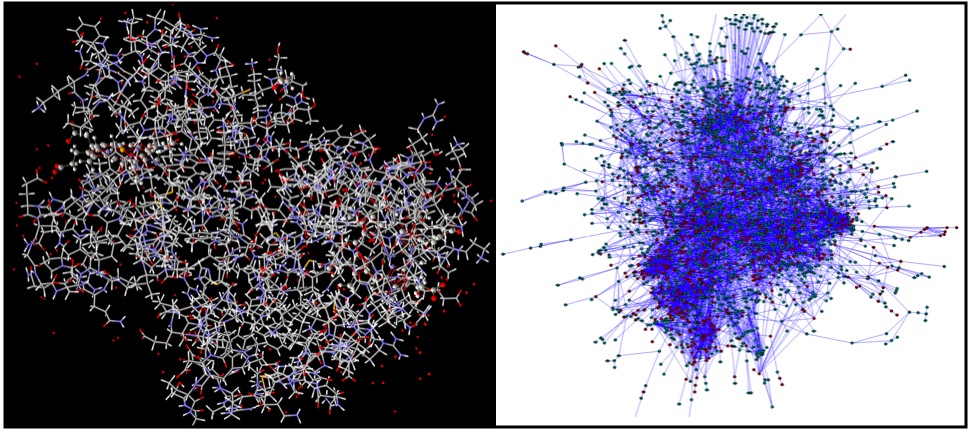Molecular biologists have long operated on the principle that knowing the structure of a biological entity is critical for understanding how it works. Most famously, this was the premise behind one of biology's most iconic discoveries, Watson and Crick's model of the structure of DNA. Structure-function studies have been the foundation of much of molecular biology ever since.
Although the structure of DNA yielded almost immediate insight into an important biological problem, solving structures hasn't always resulted in a eureka moment. The same year Watson and Crick received their Nobel Prize, two other scientists, John Kendrew and Max Perutz, were also awarded the Nobel for determining the structure of a biological molecule. Unfortunatly for Kendrew and Perutz, instead of a flash of insight the result was incomprehension. They had determined the structure of two related proteins, myoglobin and hemoglobin, and these structures at first glance looked like just an irregular mass of thousands of atoms.
Happily, the befuddlement didn't last long. Scientists quickly learned how protein structures explain their function, and today we have amazing structural snapshots of proteins in action. These studies of structure have helped biologists understand the gritty details of key biological processes, such as
how membrane-embedded ion pumps enable our nerves to conduct electrical signals. Using a protein's structure to understand its function has now become routine.
But today biologists are facing another moment of incomprehension. We're staring at structures of a different type of biological entity: a network, not an irregular mass of atoms, but one of connections. We know that biological networks give cells their ability to make sense of the world, to process information, to sense the environment or the cells' own internal state, and to take appropriate action. Scientists have been mapping these networks in great detail for years now, but the result is frequently just a giant, molecular hairball (or 'ridiculogram', as a friend calls it).
In other words, scientists are facing yet another giant structure-function problem. How do the strucures of biological networks result in something functional?

 Melville on Science vs. Creation Myth
Melville on Science vs. Creation Myth Non-coding DNA Function... Surprising?
Non-coding DNA Function... Surprising? Yep, This Should Get You Fired
Yep, This Should Get You Fired No, There Are No Alien Bar Codes In Our Genomes
No, There Are No Alien Bar Codes In Our Genomes









